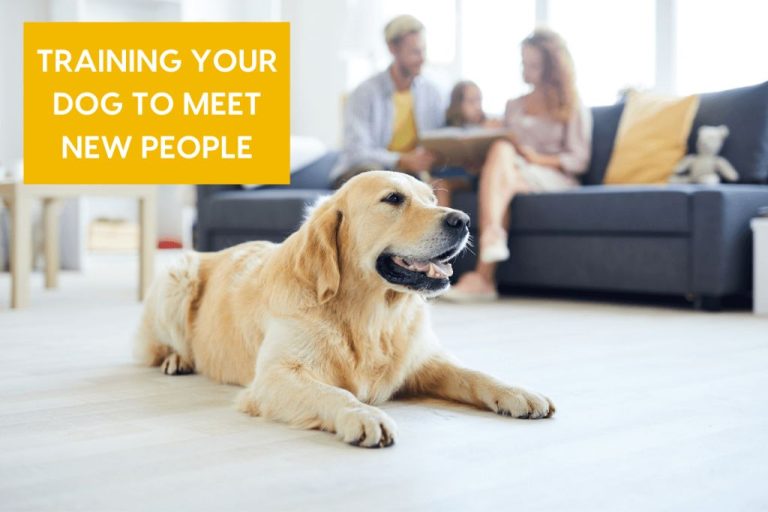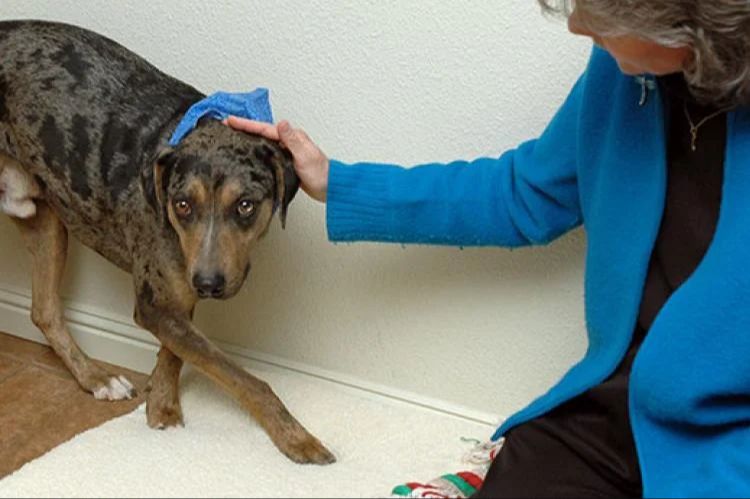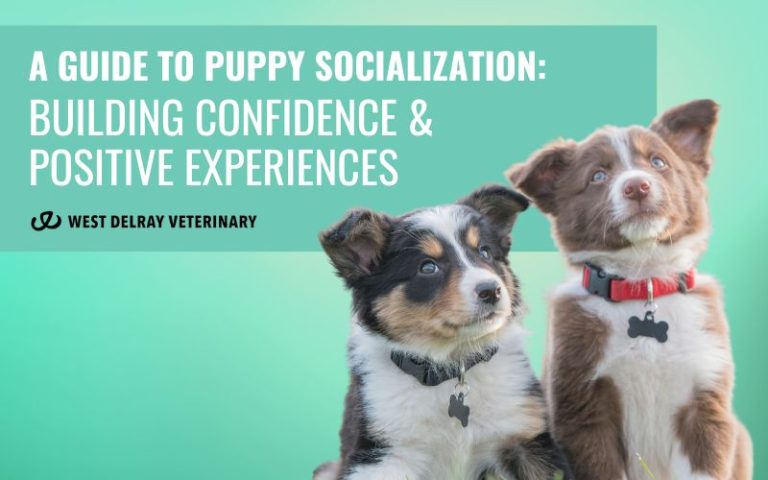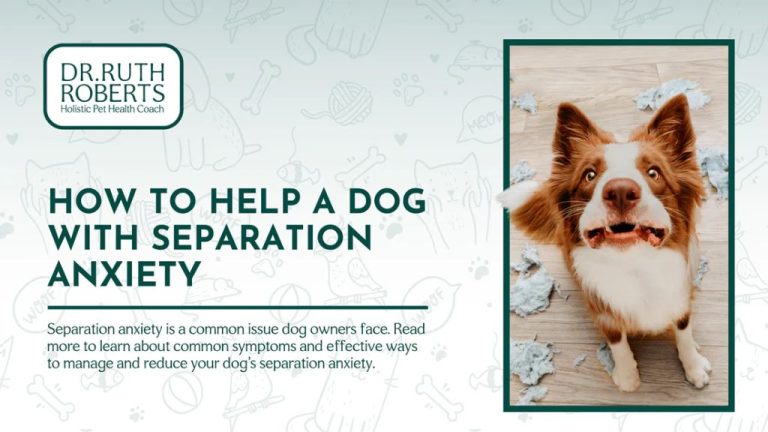Teaching Your Dog To Be Gentle: Bite Inhibition Training Tips
Why Teach Bite Inhibition
Puppies explore the world with their mouths, so it’s important to teach them not to bite too hard from a young age. Proper bite inhibition training prevents injuries for both humans and other dogs. Puppies usually bite and nip while playing, not out of aggression. Without training, those nips can become painful. Teaching bite inhibition makes dogs better socialized and safer to be around, especially children and elderly adults who may be more sensitive to nipping. According to this article, the goal is to teach puppies to use a “soft mouth” and inhibit the force of their biting down on human skin.
When to Start Training
It’s best to start bite inhibition training when your puppy is around 8-12 weeks old. Puppies are most impressionable at this young age and can learn good habits quickly. According to The Spruce Pets, puppies who stay with their litter until 7-12 weeks tend to develop better bite inhibition, as their siblings will yelp and stop play when bitten too hard. Starting training during this timeframe will reinforce these lessons.
Bite inhibition can still be taught after 12 weeks, but it becomes more difficult as the puppy ages. Older puppies and adult dogs have more firmly ingrained mouthing habits. However, with diligent training using positive reinforcement methods, dogs of any age can learn bite inhibition.
How Dogs Learn Bite Inhibition
Dogs naturally learn bite inhibition through play with other dogs during puppyhood. When puppies play, if one puppy bites another too hard, the bitten puppy will yelp and stop playing. This teaches the biter to be gentle and inhibits hard biting in the future. Positive reinforcement helps teach dogs to be gentle when interacting with humans.
According to The Spruce Pets, reward your dog with treats and praise when they play gently with your hands. Any time their teeth touch skin, say “ouch” and immediately stop playing. This mimics what would happen if they were playing with another puppy. With consistency, your dog will learn that gentle mouthing gets rewarded, but hard biting ends playtime.
Focus on rewarding calm, gentle behavior when your puppy is resting or chewing a toy. If they start to mouth you, redirect them to a toy and praise if they redirect their energy. This positive reinforcement builds the association between being gentle and getting attention or treats.
Set Up Training Sessions
It is important to create an environment that sets your dog up for success during bite inhibition training. Make sure training sessions are calm and positive, using toys and chews that your puppy enjoys. According to the American Kennel Club, you want your puppy to associate human hands with something pleasant, not as something to play bite with.
Set up short but frequent training sessions of 5-10 minutes, several times per day. Keeping the lessons short and positive will help your puppy stay engaged. Rotate through different chew toys and treats to keep your puppy interested. Provide plenty of praise and rewards for good behavior.
Training sessions should take place in a relaxed setting without many distractions. It may be helpful to let your puppy play freely and release some energy before starting a focused training session. Always stay calm – if you get frustrated, end the session on a positive note and try again later.
Teach Soft Mouth
One of the most effective ways to teach your puppy to be gentle with their mouth is to reward them when they lick or mouth gently instead of biting. Say the command “be gentle” and then immediately praise or give your puppy a treat when they lick you instead of biting down hard [1]. This technique helps establish a connection for the puppy between being gentle and getting something positive in return.
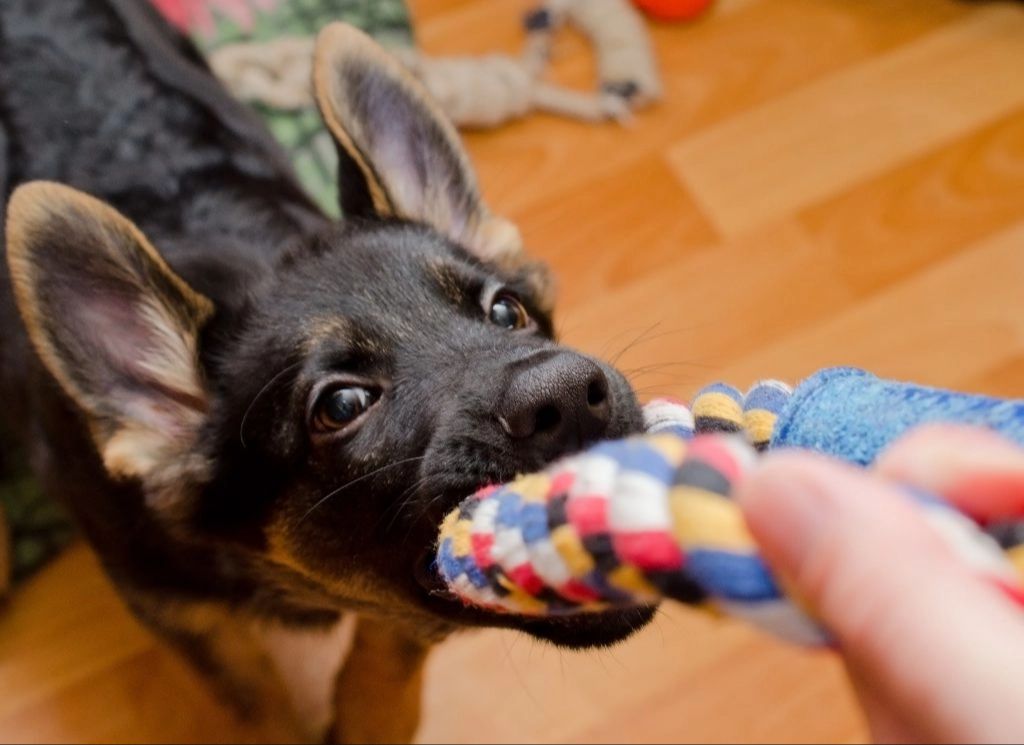
Make sure to only reward the puppy when they are displaying the exact behavior you want – light mouthing or licking. Be careful not to inadvertently reinforce biting down too hard by saying “no bite” and then giving a treat. The puppy may associate the treat with the biting rather than the no bite command. Consistency is key – immediately reward soft mouthing every time you see it.
You can even teach the “kiss” command by capturing the behavior when your puppy licks and putting it on cue. This gives you a way to request gentle mouthing when you want to train the behavior.
With regular rewards for soft mouthing and ignoring unwanted harder biting, the puppy will learn that gentle on skin is what earns treats and praise. Be patient, it can take some time for a puppy to develop good bite inhibition.
Discourage Rough Play
It’s important to discourage rough play and mouthing of human skin from the very beginning. If your puppy starts to play too roughly or bite too hard, say a firm “too rough” or “no bite” [1]. Then, redirect your puppy’s attention to a chew toy instead of your hand [2]. Offer praise and reward gentle play with the toy. Avoid scolding or punishing your puppy for rough mouthing, as this can make some puppies bite harder [2]. Stay calm and be consistent, and your puppy will learn that gentle play gets attention, while rough biting ends the fun.
If Bitten Too Hard
If your puppy bites you too hard during play, it is important to communicate that this is unacceptable. The most effective way to do this is to say “ouch” in a high-pitched voice, then immediately stop playing and ignore your puppy for a brief time.
By saying “ouch,” you are communicating to your puppy that they have hurt you. The high-pitched voice is used because it is similar to the yelp another puppy would make if bitten too hard. This sends the message that the bite was too hard.
It’s also critical to immediately stop play and ignore your puppy. This shows your pup that good things (like play and attention) end when they bite too hard. Walk away or turn away from your puppy for 15-30 seconds. Then, resume playing gently.
With consistency, your puppy will learn that gentle play is rewarded with your attention but hard bites lead to ignoring. This is how puppies teach each other bite inhibition when playing together. Mimicking this process will result in a puppy who learns to play gently.
Be Consistent
One of the most important aspects of bite inhibition training is consistency (https://www.thesprucepets.com/bite-inhibition-training-for-puppies-1118223). Make sure that all members of the family and friends use the same training methods when interacting with your dog. Reinforce the training on a daily basis by setting aside dedicated training sessions. Consistency helps solidify the training and prevents confusing signals being sent to your dog if different people use different techniques.
During playtime and normal interactions, everyone should respond the same way if your dog mouths or bites too hard. Say “ouch” in a high-pitched voice, stop playing immediately, and walk away to show the fun stops when they bite too hard. Give your dog praise and treats when they inhibit their bite strength. This constant feedback will help the training sink in.
Setting aside 5-10 minutes per day for bite inhibition training sessions will go a long way in reinforcing the training. Use toys and food to practice having your dog take items gently using a soft mouth. If they bite too hard, use the “ouch” technique. With daily reinforcement, your dog will quickly learn to regulate their bite pressure.
Use Dog Body Language
Dogs communicate a lot through body language. When teaching bite inhibition, it’s important to praise your puppy for having a calm, submissive posture during play. Signs of submissive body language include a relaxed facial expression, loose mouth, and relaxed body posture. If your puppy gets over-excited with erect ears, tension in the body, intense staring, growling, or hard biting, end play immediately so the puppy can calm down. Then resume play gently.
According to Bite Inhibition Training, “Work on bite inhibition only when your pup is calm and you have time to sit on the floor and play gently. If the pup bites too hard, yelp. If he responds by stopping or licking where he bit, praise calmly and continue. If he gets excited and bites harder, yelp and walk away or turn away for 15-30 seconds. Then try again.” Keeping sessions short and ending on a positive note will teach the puppy to associate gentle play with praise.
Patience and Practice
Bite inhibition training takes time and consistency. It’s important to keep training sessions short and positive to avoid overwhelming or frustrating your dog. As the MCCanndogs article notes, this training “is not an overnight fix.” Plan to have multiple short sessions per day over a period of weeks or months. Don’t expect perfect behavior right away. With regular, gentle guidance, your dog will learn to inhibit the force of their bites.
Make sessions constructive and reward gentle mouthing. If your dog bites too hard, briefly stop play and give them a chance to self-correct by calming down. Resume play when they are focused and being gentle again. End each session on a positive note with praise or treats for good behavior. Your patience will pay off as your dog develops better bite inhibition over time.

